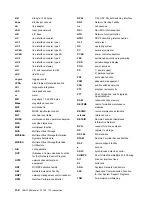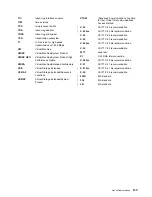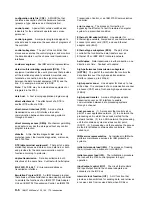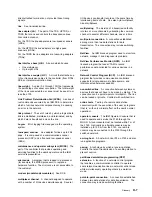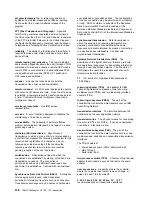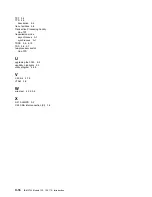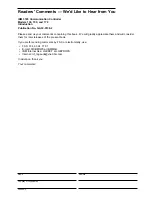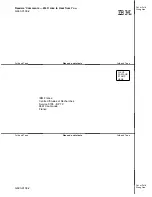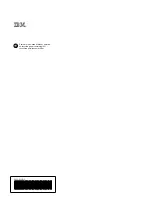
program temporary fix. A temporary solution or
by-pass of a problem diagnosed by IBM as resulting
from a defect in a current unaltered release of the
program.
PTT (Post Telephone and Telegraph). A generic
term for the government-operated common carriers in
countries other than the U.S.A. and Canada. Examples
of the PTT are British Telecom in the United Kingdom,
the Deutsche Bundespost in Germany, and the Nippon
Telephone and Telegraph Public Corporation in Japan.
reliability. The ability of a functional unit to perform a
required function under stated conditions, for a stated
period of time.
remote loading and activation. The remote loading
and activation capability allows the host (through VTAM
commands) to load and activate a remote NCP when a
remote 3745 is connected to a channel-attached 3745
via a switched subarea link (NTRI, X.21 switched or
X.25 leased and switched).
scanner. A device that scans and controls the
transmission lines. Also called
line adapter.
selector channel. An I/O channel designed to operate
with only one I/O device at a time. Once the I/O device
is selected, a complete record is transferred one byte at
a time. Contrast with
block multiplexer channel and
multiplexer channel.
service representative. See IBM service
representative
services. A set of functions designed to facilitate the
maintenance of a device or system.
serviceability. The capability to perform effective
problem determination, diagnosis, and repair on a data
processing system.
start-stop (SS) transmission. Asynchronous
transmission in which a group of bits is (a) preceded by
a start bit that prepares the receiving mechanism for the
reception and registration of a character, and (b)
followed by at least one stop bit that enables the
receiving mechanism to come to an idle condition
pending reception of the next character.
switched line. A transmission line with which the
connections are established by dialing, only when data
transmission is needed. The connection is
point-to-point and uses a different transmission line
each time it is established. Contrast with
nonswitched
line.
Synchronous Data Link Control (SDLC). A discipline
for managing synchronous, code-transparent,
serial-by-bit information transfer over a link connection.
Transmission exchanges may be duplex or half-duplex
over switched or nonswitched links. The configuration
of the link connection may be point-to-point, multipoint,
or loop. SDLC conforms to subsets of the Advanced
Data Communication Control Procedures of the
American National Standards Institute and High-Level
Data Link Control (HDLC) of the International Standards
Organization.
synchronous transmission. Data transmission in
which the sending and receiving instruments are
operating continuously at substantially the same
frequency and are maintained, by means of correction,
in a desired phase relationship. Contrast with
asynchronous transmission.
Systems Network Architecture (SNA). The
description of the logical structure, formats, protocols,
and operational sequences for transmitting information
through a user application network. The structure of
SNA allows the users to be independent of specific
telecommunication facilities.
T1. U.S. service for high-speed transmissions at
1.536 Mbps.
token-ring adapter (TRA). Line adapter for IBM
Token-Ring Network, composed of one token-ring
multiplexor card (TRM), and two token-ring interface
couplers (TICs).
token-ring subsystem (TRSS). The part of the
controller that controls the data transfers over an IBM
Token-Ring Network.
transmission interface. The interface between the
controller and the user application network.
transmission line. The physical means for connecting
two or more DTEs (via DCEs). It can be nonswitched
or switched. Also called a
line.
transmission subsystem (TSS). The part of the
controller that controls the data transfers over low- and
medium-speed, switched and nonswitched transmission
interfaces.
The TSS consists of:
Low-speed scanners (LSSs) associated with
LIBs, through
Serial links (SLs).
two-processor switch (TPS). A feature of the channel
adapter that connects a second channel to the same
adapter.
user access area. A specific area in the controller
where the customer can install, remove, change, or
swap LICs and TICs by himself.
V.22, 22 bis, 23, 24, 25, 25 bis, 35. CCITT
recommendations on transmission interfaces.
X-8
IBM 3745 Models 130, 150, 170: Introduction
Summary of Contents for ThinkPad 130
Page 1: ...IBM 3745 Communication Controller Models 130 150 and 170 IBM Introduction GA33 0138 2...
Page 2: ......
Page 3: ...IBM 3745 Communication Controller Models 130 150 and 170 IBM Introduction GA33 0138 2...
Page 8: ...vi IBM 3745 Models 130 150 170 Introduction...
Page 15: ...IBM 3745 Communication Controllers in a Typical Network Chapter 1 Highlights 1 3...
Page 24: ...2 4 IBM 3745 Models 130 150 170 Introduction...
Page 32: ...3 8 IBM 3745 Models 130 150 170 Introduction...
Page 72: ...5 8 IBM 3745 Models 130 150 170 Introduction...
Page 74: ...6 2 IBM 3745 Models 130 150 170 Introduction...
Page 78: ...3745 130 150 170 General Data Flow 6 6 IBM 3745 Models 130 150 170 Introduction...
Page 82: ...A 4 IBM 3745 Models 130 150 170 Introduction...
Page 86: ...X 4 IBM 3745 Models 130 150 170 Introduction...
Page 92: ...X 10 IBM 3745 Models 130 150 170 Introduction...
Page 94: ...X 12 IBM 3745 Models 130 150 170 Introduction...
Page 100: ...X 18 IBM 3745 Models 130 150 170 Introduction...
Page 103: ......









